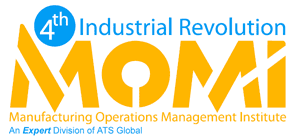23/05/2016
Industry 4.0 & The Smart Services Welt
The Smart Services Welt 2025 report was published in March 2015 and builds on the original Industry 4.0 report from April 2013. A “Welt” according to the Oxford Dictionary is a leather rim sewn around the edge of a shoe but in this context “welt” is German for World. Let me quote the report:
“In the smart factory, individual customer orders determine manufacturing processes and the associated supply chains. The smart factory produces smart products; intelligent, networked objects, devices and machines that underpin the services provided in the Smart Service Welt. These smart services are put together based on users’ needs. In the Smart Service Welt, all of these machines, systems and factories can be easily connected to the internet via digital platforms, using the “plug & use” approach. They are then represented virtually on these platforms. Their integration via the platforms enables the field data level i.e. the products operating data – to be accessed from any location.”
The vision imagines a world (welt) whereby factories can post requests for these services on fully automated market places. Service providers respond to these requests. Whilst initially difficult to imagine this model examples are beginning to appear. Imagine supplying a predictive maintenance service on demand. The data will be there, it’s the cleverest algorithm which will be bought/hired as a service. Yes, there are many barriers to be overcome but the report predicts the following:
“As a result, by 2025, the productivity of German manufacturing industry has risen by more than 30%. Despite being a high-wage economy, Germany has been able to maintain value creation and employment levels whilst securing its long-term competitiveness.”
For people like myself involved in real manufacturing in the real welt today visionary statements are fine but how to act today? Today’s action, today’s decisions, today s commitment of resources (money and people) can drive us in the right direction. Thinking carefully through those services I think an initial step is the use of “small data”. Start building algorithms and use them for immediate and future benefit.
To learn more join Mike James at one of www.mom-institute.org Smart Manufacturing & Industry 4.0 Workshops.
Mike James is the chairman and CTO of ATS International
This article was first published in the Winter 2015 issue of OnWindows
